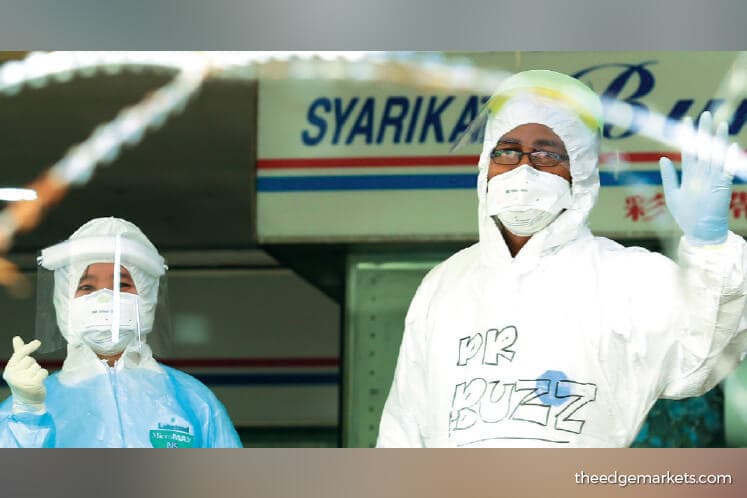
This article first appeared in The Edge Financial Daily on April 15, 2020
KUALA LUMPUR: The second phase of the movement control order (MCO) ended yesterday.
With most Malaysians staying at and working from home for 28 days, the charts based on statistics suggest the intense containment efforts have started to be beneficial in containing the Covid-19 outbreak.
It is encouraging that in the last nine days, there were six instances that daily recoveries exceeded daily new infections. Also, over the same period, we have seen three days when recovered patients topped 200 in a single day.
More importantly, looking at the rate of novel infectious cases reported, defined as the seven-day rolling average of newly reported cases, the curve showed a certain degree of “flattishness”, meaning the increase in new cases could be slowing down. There was a sign of stabilising, even showing a small dip as of latest.
However, a consultant doctor based in one of the dedicated Covid-19 centres, Hospital Sungai Buloh, told The Edge Financial Daily that it will be very crucial for new infectious cases to remain static to buy some time for hospitals to cope with the situation until an effective vaccine is found.
“Although the number of new cases is sort of static in range lately, I have [however] observed the public’s lax attitude and less compliance begins to happen. I fear a resurgence in cases in the coming weeks,” she added.
Currently, she is more concerned about variables such as imported cases in the country and the chances of medical personnel contracting the virus.
Meanwhile, former deputy health minister Dr Lee Boon Chye said the idea of flattening the curve is to stop new infectious cases from rising exponentially, so the country’s healthcare facilities are able to cope with the number of patients.
He noted the death toll tends to rise rapidly in the scenario of insufficient healthcare facilities, such as the situation in New York and Italy.
“So far, our healthcare system is able to cope with the current numbers, but [the] long-term control largely depends on identifying clusters and containment,” Lee explained.
The risk of virus spread remains high, he said, as there are still new infections from several identified clusters as well as sporadic cases with undetectable sources of infection.
As such, he suggested the health ministry (MoH) needs to beef up contact-tracing and quick-result testing within 24 hours. In fact, he opined that the country has the capability to better implement the measures.
“We have to quickly identify and isolate infected individuals, and those tested positive, until the whole cluster gets contained.”
Lee also advocates a contact-tracing team be allocated for all localities by residential areas. He suggested local community leaders communicate and liaise with the authorities to help facilitate testing procedures with residents.
He opined that with the current capacity of health officials, it will be tough for prompt contact-tracing to be done unless ministers get involved and draft up roles proactively.
“The director-general of health, as a civil servant, needs to follow standard protocols, and the ministry of health has limited jurisdiction outside of its role, which may delay time taken for tracing efforts. Ministers have to get involved to streamline the process.”
On high-risk clusters, Lee reckoned the quarantine of returnees from overseas has been playing out well so far. However, he is concerned about illegal immigrants from neighbouring countries that may be of high risk, subject to the police tightening border controls.
As for cases among migrant workers, such as those at Selangor Mansion and Malayan Mansion in Kuala Lumpur, he said they are just the tip of the iceberg.
Not with standing, Lee believes the need to speed up testing, such as one allowing for same-day results. This will be more efficient for contact-tracing and avoid lagged statistics.
“So far, the number of tests done is fairly sufficient, just that results need to be quick. Imagine 8,000 backlog cases where half of them are new cases. If out of 10% were tested positive, there will be 400 new cases, implying cases are rising exponentially, [and] worse if the results are lagged three days as policymakers are relying on [them].”
Nonetheless, Lee opined that the country is capable of prompt testing, but it depends on the government’s budget allocation.
“If we delay the tests by one day, it will be equivalent to the MCO being delayed by another day, which will cost billions in economic terms. It will be money worth spending to get things under control,” he added.
Notably, Italy, which is hit the hardest, has seen a flattening of new cases due to massive testing done and an aggressive policy in contact-tracing. Other countries such as Germany and South Korea, having seen plateauing new cases, are correspondingly the ones that have done most tests in the world.